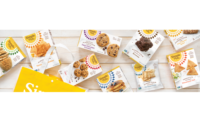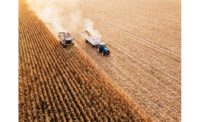Snack Food & Wholesale Bakery recently was able to talk to Marc Kuo, CEO and co-founder, Routific, about SMBs and non-traditional delivery methods during the COVID-19 pandemic.
Liz Parker: How can SMBs and farmers incorporate technology and tactics beyond traditional delivery methods to distribute their goods?
Marc Kuo: Using new technologies can be intimidating for small businesses and farmers who don’t consider themselves tech-savvy. But it’s important to stay open-minded and understand that it can make a lot of sense to automate some processes, and allow technology to help deal with problems that humans aren’t very efficient at solving.
Distributing and delivering goods from one place to another involves a lot of work. You have to maintain a fleet of delivery vehicles, hire delivery drivers, and then you need to figure out the logistics of having all your products delivered in a timely and efficient manner.
This last challenge can be especially time consuming. Many small businesses and farmers often spend a few hours every day trying to plan routes manually. This can mean something as manual as eyeballing a map, using spreadsheets to divvy up delivery runs by zip code, or manually plotting stop after stop in Google Maps.
While these methods might sound familiar to you, you’ll also recognize that they are extremely time consuming. They take precious resources and attention away from your core business—making quality snacks and baked goods for your customers.
Poorly planned routes—or worse, not planned at all—can lead to a lot of wasted drive time and fuel, resulting in extremely thin margins and potentially even a money-losing business.
The good news is there’s a solution to manual route planning.
Route optimization software helps delivery businesses find the most cost-effective route for a set of stops. Many people think this means finding the shortest distance or fastest time between point A and point B, but this isn’t quite right.
Google Maps is amazing at helping people find the shortest distance or fastest time from one point to another. But when it comes to planning delivery routes for a business, the key to efficient route planning is to sequence orders so you deliver as many goods as possible in little time. If you have multiple drivers, you'll need to decide how to split the load in the most efficient way – that’s where route optimization software comes in.
Route optimization is used when you want to minimize drive time for multiple stops, while also accounting for a range of complexities like customer time windows, vehicle capacities, driver schedules, and more. Perfect for a farm or a SMB that’s looking to plan efficient delivery routes.
A lot of small businesses have yet to discover route optimization software. We often speak to businesses and farmers who say: “I never knew this even existed!” Well, it does!
This kind of software was previously only used by large corporations who had complex logistics needs and could afford a big price tag—think Walmart and UPS. Routific is the only route optimization solution on the market built especially for SMBs. A powerful routing engine does all the heavy lifting in the background; meanwhile, Routific users interact with a simple, easy-to-use, and affordable interface.
LP: How can data-backed route optimization save significant costs for fuel and drivers?
MK: The goal of route optimization software is to minimize driving time for a delivery route with multiple stops. With that in mind, you can already infer the cost savings associated with adopting this kind of technology.
SMBs and farmers adopting route optimization into their daily workflows have reported that delivery routes end up 20-40% shorter than if they planned the routes manually. This results in significant time and fuel savings.
Time savings
Consider this: If you have 57 stops, there are already more than a quattuorvigintillion possible combinations. That’s one with 75 zeros. A human, no matter how clever, will not be able to crunch the numbers and find the most optimal delivery route. It’s not fun, and it’s certainly not an effective use of your time. These kinds of calculations are best left to route optimization algorithms. A good routing algorithm can churn through millions of possible combinations and select the best one for you in just a matter of minutes.
Fuel savings
With shorter and more efficient routes, your drivers are spending less time on the road and they’re not driving around in circles, doubling back, or driving across town to get their deliveries done.
We recently released a report that found route optimization technology can reduce 2,574.65 miles a year for the average delivery driver. The report also found that by switching from manual route planning to route optimization software, you can cut down the carbon emissions for your delivery drivers by 1.887 tonnes per year per driver – the equivalent of planting 86 trees per year for every delivery driver you employ.
The numbers in the report were reviewed by third-party environmental auditors during the due diligence process of a $1.8M grant Routific received in Clean Tech Funding. As of December 2019, Routific alone helped delivery businesses around the world save 11,322 tonnes of greenhouse gas emissions, the equivalent of planting more than 500,000 trees.
LP: What are some best practices for SMBs hoping to quickly move their business to a delivery-first model?
MK: Wholesale bakeries looking to start up a delivery-first model can follow what we call the Ideal Delivery Model framework, which introduces three core elements necessary to launch a successful delivery business.
The three elements include setting up your online store via an e-commerce platform, making sure you have a smart way to plan and optimize your delivery routes efficiently, and ensuring a smooth delivery experience for both the customer and your business.
If you’d like to learn more about the three elements of the Ideal Delivery Model, and how you can leverage it for your delivery business, check out our free book here: How to Launch and Scale a Delivery Business Profitably.
LP: How should SMBs scale as we move into the new post-COVID economic landscape?
MK: If you already have a delivery business, and it's starting to scale beyond 50 or 100 orders a day, it's vital you closely monitor your cost-per-delivery. In other words, how much does it cost you to fulfill each order?
Lowering your cost-per-delivery should be your goal from day one. The smartest way to do this is by creating route density – the number of deliveries your driver makes per hour. The higher your density, the lower your cost per delivery.
You can lower your route density by tactfully choosing your delivery areas, choosing to make deliveries only on select days and times, and by adopting route optimization software.
Our ebook dives into specific tactics involved to achieve high route density. It’s free to download here: How to Launch and Scale a Delivery Business Profitably.
LP: How does Routific make life easier for SMBs?
MK: Routific was built with small business in mind. Our route optimization solution is powerful, yet easy-to-use and affordable. We offer free 1-1 training for SMBs, and a free 7-day no obligation trial. More than 800 businesses around the world trust Routific to plan and optimize their delivery routes. Many of our customers are in the business of delivering food products, including baked goods like bread, cakes, cookies, donuts, and other snacks.




